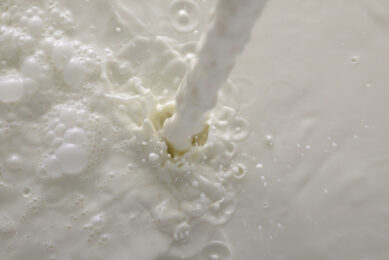Bright spots on the horizon for global dairy prices

There are bright spots on the horizon for improved global dairy prices, but farmers around the world are not awash in profitability as margin challenges persist into the year, according to a new report by Rabobank.
Milk supply growth continues to struggle – the second half of 2023 saw weaker year-over-year production from the key exporting regions, co-author, Rabobank NZ senior agricultural analyst Emma Higgins says.
“A return to production expansion will take time, and we forecast lower year-over-year output for the first 2-quarters of this year before volume turns positive into the second half of 2024.”
Higgins says that there were also positive developments in China with retail and food service sales showing strength through the Lunar New Year. “Slowing milk production growth in China means we expect imports to improve in 2024, even if they remain lower than the long-term average.”
Higgins says slow but steady dairy commodity price gains will materialise this year. “And accordingly, we’ve now made a small upwards revision to our New Zealand milk price forecast for the 2023-2024 season, increasing this by 5 cents to NZ$7.80kg (US$4.07) per kg milk solids.”
Dairy prices dropped significantly by 2.8% in the Global Dairy Trade auction of 19 March. Prices were broadly weaker. Whole milk powder was down 4.2% and skim milk powder was down 4.8%. Westpac NZ says that whole milk powder prices are now down 8.6% from their early February peak.
“Interestingly, support from the 3 main regions that usually pick up the bulk of product in the auctions was weaker this time,” Westpac emphasises. “Chinese buyers pulled back further as did Middle Eastern buyers a touch. In contrast to the weaker auctions last year, this time we saw regions that don’t usually feature in the top 3 purchasers have to pick up the slack in the auction, which presumably contributed to the weak result.”
More than half way into the current dairy season, Australian milk production is firing on all cylinders, according to a report of Rabobank Australia, with widespread growth in milk supply across all dairying regions due to favourable seasonal conditions and good farmgate margins.
Rabobank says Australian milk production reached 5.35 billion litres from the period July 2023 to January 2024, 2.5% year-on-year higher. Summer rainfall has far exceeded expectations across much of Australia’s east coast, providing a good platform for livestock producers.
Dairy to enjoy a strong 2024
Report co-author, senior dairy analyst Michael Harvey says Australian dairy farmers can expect to enjoy a strong 2024. “With milk prices remaining elevated, expectations are that new season pricing from 1 July will be margin-supportive. And there is plenty of homegrown feed in storage, and purchased feed is affordable.”
Rabobank forecasts the Australian milk supply to finish the 2023-2024 season (ending 30 June) 2.6%, with growth to continue into the new season in the range of 3-4% for 2024-2025.
Tasmanian company Ashgrove has partnered with startup SeaForest to produce ‘eco-milk’, a climate-friendly milk. One of Ashgrove’s herds is given the supplement asparagopsis, a native Australian seaweed that can lower the emission of methane by cows. The company’s initial goal is to reduce methane emissions from its milk by 30%.
According to Ashgrove, the milk retains all the nutritional benefits and taste of Ashgrove full cream milk. “This is marking a significant step towards sustainable dairy production,” the company says. Ashgrove Eco-Milk is now available on the shelves of supermarket chains Woolworths and IGA across Tasmania.
Strong milk production throughout the US has led to active non-fat Dry Milk (NDM) drying schedules in the country, according to the USDA. High heat NDM prices were unchanged for the West of the US and moved lower at the bottom end of the Central and East range.
Farm level milk production in the US is trending steady to higher throughout the country. There are spring flush volumes in certain areas of the West, as well as in the south-central US. In the East, farm level milk outputs are trending steady to higher.










